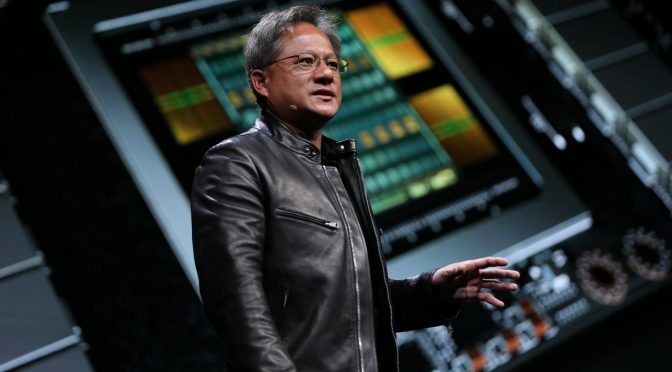Nvidia recently purchased ARM in a $40 billion deal. The UK-based computer chip designer ARM Holdings was sold to the American graphics chip specialist Nvidia. ARM’s technology is at the heart of most smartphones, among many other devices. Nvidia has promised to keep the business based in the UK, to hire more staff, and to retain ARM’s brand.
Nvidia CEO Jensen Huang commented during a conference call yesterday, that we could see Nvidia-branded CPUs as well in the future, which will set a new level of competition with Intel and AMD. There’s been plenty of speculation that Nvidia won’t create its own CPUs at all, instead it will use stewardship of ARM to foster a healthier ARM server/consumer ecosystem that can also leverage Nvidia’s GPUs tied together with CUDA and its Mellanox-derived networking stack.
Yesterday Timothy Prickett Morgan author of TheNextPlatform asked Jensen Huang, “Will you actually take an implementation of something like Neoverse first and make an Nvidia-branded CPU to drive it into the data center? Will you actually make the reference chip for those who just want it and actually help them run it?”
Huang responded with the following statement, “Well, the first of all you’ve made an amazing observation, which is all three options are possible. So now with our backing and Arm’s serious backing, the world can stand on that foundation and realize that they can build server CPUs. Now, some people would like to license the cores and build a CPU themselves. Some people may decide to license the cores and ask us to build those CPUs or modify ours.”
“It is not possible for one company to build every single version of them,” Huang continued, “but we will have the entire network of partners around Arm that can take the architectures we come up with and depending on what’s best for them, whether licensing the core, having a semi-custom chip made, or having a chip that we made, any of those any of those options are available. Any of those options are available, we’re open for business and we would like the ecosystem to be as rich as possible, with as many options as possible.”
Nvidia already builds ARM-based processors for some low-power applications, but now having full access to ARM’s engineering expertise will undoubtedly help the process of designing custom Nvidia data center and consumer-based chips as well. The company will also have an overall control of the ISA. My guess is that we might see server-based chips first, instead of consumer SKUs. Nonetheless, the new processors are going to be Nvidia-branded.
Huang also wants to speed up the Neoverse roadmap to bring innovations to ARM licensees at a much faster rate. It would also be in Nvidia’s best interest to broaden the ecosystem of ARM server chips. Nvidia could also put some GPU-specific optimizations like CPU/GPU memory consistency into the ARM architecture. This might allow other chip makers to use Nvidia’s GPUs in their solutions, further solidifying Nvidia’s position as an AI solution provider. We expect the landscape of the server market to change drastically if regulators approve this latest merger.
As of now, Intel remains a dominant server chip provider in the market, but both the consumer side (Apple) and server side (AWS) of its businesses could signal a potential weakness and drawback.
We already have several ARM Neoverse-based server chips in the market, like Graviton 2 from AWS, Altra from Ampere, and Marvell’s Cavium ThunderX, so it would be interesting to see how Nvidia joins the competition, and how ARM customers will respond to the recent Nvidia/ARM merger.
AMD has a very steady server market hold with its EPYC Rome chips, and this could present a challenge to ARM. The adoption rate of ARM-based server chips has seemingly slowed largely due to the plug-and-play nature of the x86 software ecosystem provided by AMD.
Stay tuned for more news!
Hello, my name is NICK Richardson. I’m an avid PC and tech fan since the good old days of RIVA TNT2, and 3DFX interactive “Voodoo” gaming cards. I love playing mostly First-person shooters, and I’m a die-hard fan of this FPS genre, since the good ‘old Doom and Wolfenstein days.
MUSIC has always been my passion/roots, but I started gaming “casually” when I was young on Nvidia’s GeForce3 series of cards. I’m by no means an avid or a hardcore gamer though, but I just love stuff related to the PC, Games, and technology in general. I’ve been involved with many indie Metal bands worldwide, and have helped them promote their albums in record labels. I’m a very broad-minded down to earth guy. MUSIC is my inner expression, and soul.
Contact: Email

